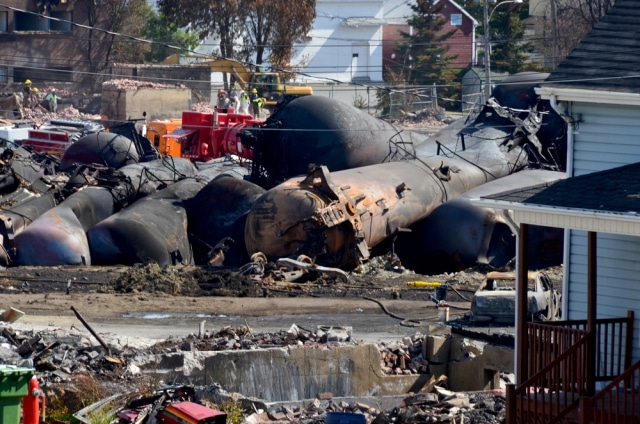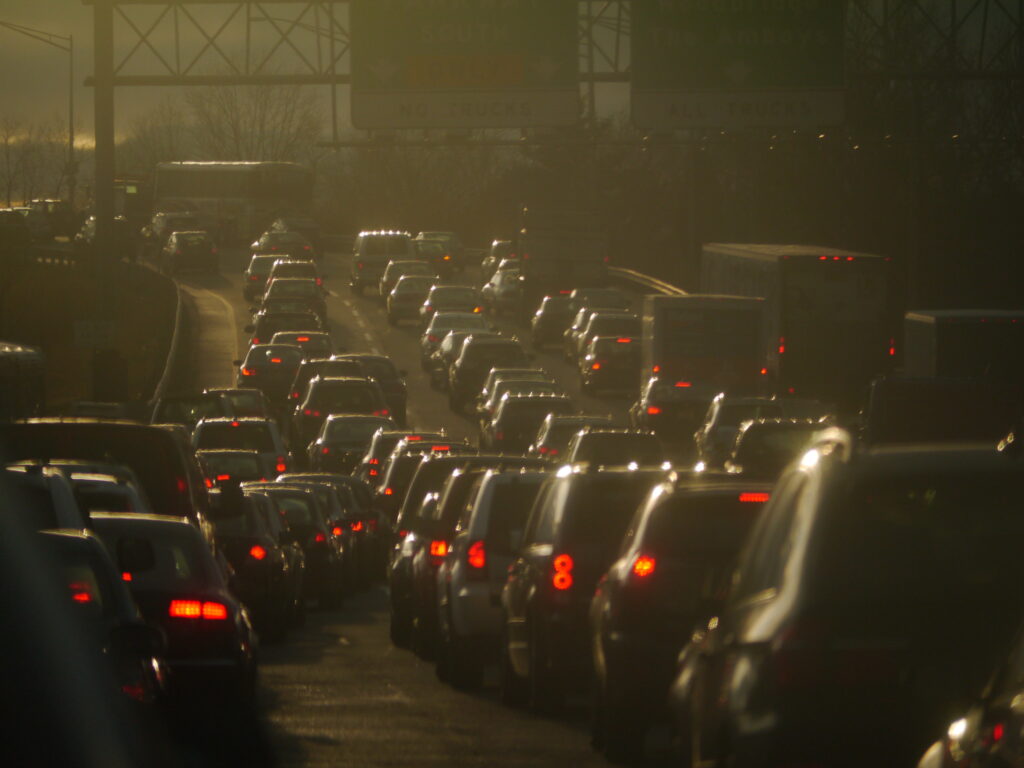In 2013, with the rapid expansion in the use of rail to transport crude oil, we learned that there was a huge increase in the the amount of oil spilled as a result of rail incidents.
Just two weeks ago, a train derailed near Pittsburg and spilled 4,000 gallons. More than 1.15 million gallons of crude spilled from rail cars in 2013. And this does not include the 1.6 million gallons that spilled in July of 2013 in Lac-Megantic in Canada.
To put this in perspective, the 2010 Marshall Michigan Pipeline spill — currently the largest and most costly spill on land in US history according to the National Transportation Safety Board (NTSB) — only spilled 843,000 gallons.
These rolling unit trains of crude oil can be carrying over three million gallons of crude oil at one time. The train that derailed and exploded in Aliceville, Alabama in November 2013, was carrying 2.7 million gallons of Bakken crude oil.
However, as noted in the recent NTSB recommendations, thanks to a loophole in regulations set up in 1996, the companies transporting this oil by rail are exempt from having comprehensive spill response plans. According to the January 23, 2014 Safety Recommendation from the NTSB (link to PDF):
“oil spill response planning requirements for rail transportation of oil/petroleum products are practically nonexistent compared with other modes of transportation.”
Estimates are that 90% of the oil produced in the Bakken fields in 2014 will be transported by rail. This is up from a rate of 63% in September of 2013. And as the NTSB notes, current regulations do not require the companies moving this crude to have comprehensive spill response plans despite the amounts of crude oil they are moving.
“Current regulations do not require railroads transporting crude oil in multiple tank cars to develop comprehensive spill response plans and have resources on standby for response to worst-case discharges. Although simple plans must be developed, the plans are not reviewed to evaluate the capability of rail carriers to respond to and mitigate discharges.”
The reason that the rail companies are able to move these massive amounts of crude oil without having spill response plans like other types of transportation or storage is due to a regulation put in place in 1996 by the now abolished Research and Special Programs Adminstration (RSPA). The RSPA decided that comprehensive spill response plans would only be required for tanks (single packaging) that were 42,000 gallons or larger.
The DOT-111 rail cars in widespread use today have a maximum capacity of 34,500 gallons. But the way the regulation is written, even if you have 100 of these cars in a single unit train, you still are below the 42,000 gallon limit for a single packaging, as each individual car is below the threshold.
In their latest Safety Recommendation, the NTSB states that they believe this circumvents the Clean Water Act and has recommended that the Pipeline and Hazardous Materials Safety Administration (PHMSA) change this regulation.
“Planning to respond to maximum potential releases for trains transporting crude oil, many of which are configured in unit trains as “virtual pipelines” of tank cars, also must take into account the entire quantity of lading. Therefore, the NTSB recommends that PHMSA revise the spill response planning thresholds contained in 49 CFR Part 130 to require comprehensive response plans to effectively provide for the carriers’ ability to respond to worst-case discharges resulting from accidents involving unit trains or blocks of tank cars transporting oil and petroleum products.”
The PHMSA website currently lists their response to this recommendation as: TBD.
With all of the recent media coverage of the rail oil explosions, we have now seen some response from the Department of Transportation (DOT) and the PHMSA to this issue.
However, there is little mention, outside of the NTSB’s recommendations about the issue of oil spills, about how there are no adequate spill response plans.
In Transportation Secretary Anthony Foxx’s recent “Call to Action” to the oil and rail industries, there was no mention of requiring comprehensive spill response planning.
Secretary Foxx’s “Call to Action” is really a request for the industry to volunteer to take action. In his letter to industry representatives after their January 16th meeting, he requested they submit their recommendations within 30 days and also stated the DOT would be contacting them to set up the next meeting.
On the PHMSA site’s Aggressive Action page, they do not mention anything regarding improving spill response. The focus at this point is purely on the dangers due to the explosive nature of Bakken crude and the known flaws of the DOT-111 tank cars.
The coverage of Lac-Megantic focused mostly on the loss of life and the fire damage to the town and thus, understandably, that is what is the greatest current public concern regarding these oil trains. The 1.6 million gallon spill in Lac-Megantic is rarely mentioned, or the fact that oil spilled into the Chaudière River and was traced as far as 74 miles away, according to a report by the Quebec Ministry of Sustainable Development.
It is common to see an article, like this one about the derailment and massive oil spill in an Alabama wetlands, that mentions that “no one was hurt” in the incident as if that is the only thing to consider.
And yet there have been close calls with these trains and our waterways in the U.S.
Recently an oil train derailed on a bridge over the Schuylkill River in Philadelphia. Last year, 13 cars derailed along the Penobscot River in Maine.
Apparently it is going to take a major spill into a river or lake to get any response from the industry or the PHMSA in addressing this rather big loophole for the oil-by-rail industry, just as Lac-Megantic and the ensuing explosions finally got some discussion started about the known safety issues with Baken crude and DOT-111s.
Unfortunately, as the amount of crude shipped by rail continues to increase, that spill becomes ever more likely.
Image credit: Lac-Megantic oil-by-rail disaster via Shutterstock
Subscribe to our newsletter
Stay up to date with DeSmog news and alerts






